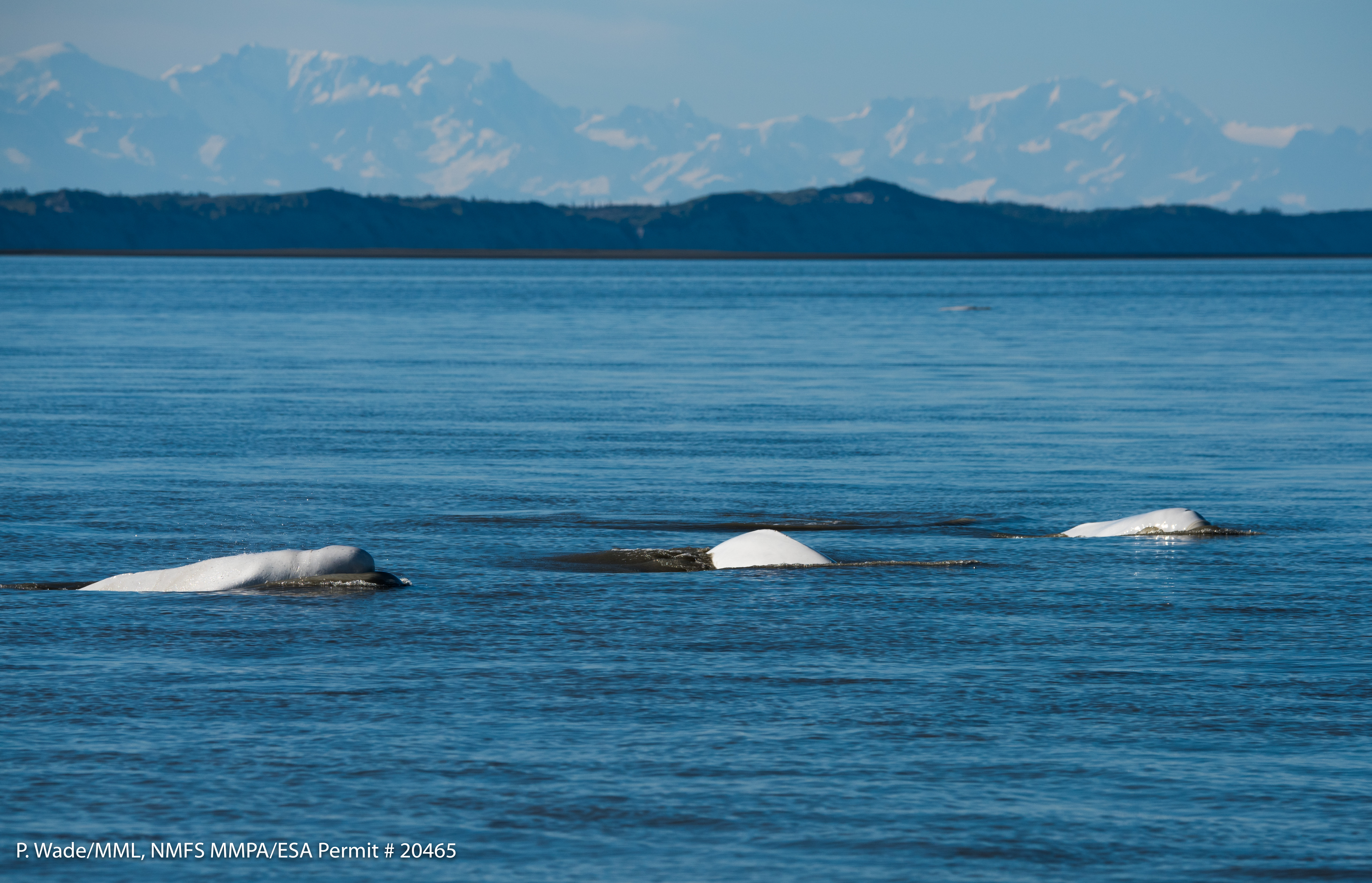Beluga whales in Cook Inlet, Alaska are critically endangered. Despite protections that have been in place 2006, beluga whales living in the Cook Inlet region of Alaska are still declining, currently numbering approximately 300 members. Scientists are confounded as to why their numbers are still so low, and are considering all possible reasons, including ocean contamination, pathogens, noise, habitat degradation, ship-strikes, disease, and declines in available prey food. Many other populations of beluga whales remain healthy, including the neighboring population in Bristol Bay, Alaska.
Scientists from WHOI and NOAA used skin biopsies obtained from Cook Inlet and Bristol Bay belugas to closely study their skin microbiomes, with a goal of developing a baseline for comparisons among healthy and affected populations, and a health index that will allow researchers to identify sick individuals with minimally invasive sampling.
“After a huge research effort in human microbiomes, science is beginning to show a lot of links between microbiomes and health in humans – and an emerging field of research is showing that may be true for whales, as well,” says Amy Van Cise, a guest investigator at WHOI and postdoctoral research biologist at NOAA. “The question is whether we can use that to aide in efforts to conserve this population before it is too late.”
“Initial indications show that environment has a strong influence on skin microbiomes in these populations, but there is much more work to be done – and quickly – in order to reverse these dire population trends,” adds Paul Wade, the lead for beluga research at Alaska Fisheries Science Center, NOAA Fisheries.
The Woods Hole Oceanographic Institution (WHOI) is a private, non-profit organization on Cape Cod, Massachusetts, dedicated to marine research, engineering, and higher education. Established in 1930, its primary mission is to understand the ocean and its interaction with the Earth as a whole, and to communicate an understanding of the ocean’s role in the changing global environment. WHOI’s pioneering discoveries stem from an ideal combination of science and engineering—one that has made it one of the most trusted and technically advanced leaders in basic and applied ocean research and exploration anywhere. WHOI is known for its multidisciplinary approach, superior ship operations, and unparalleled deep-sea robotics capabilities. We play a leading role in ocean observation, and operate the most extensive suite of data-gathering platforms in the world. Top scientists, engineers, and students collaborate on more than 800 concurrent projects worldwide—both above and below the waves—pushing the boundaries of knowledge and possibility. For more information, please visit www.whoi.edu
About NOAA Fisheries
NOAA’s mission is to understand and predict changes in the Earth’s environment, from the depths of the ocean to the surface of the sun, and to conserve and manage our coastal and marine resources. Join us on Twitter, Facebook, Instagram and our other social media channels.
Key Takeaways
- The field of marine mammal microbiome studies has been mostly focused on understanding individual and population health, to inform conservation efforts. Previous studies on species like humpbacks and common bottlenose dolphins show that marine mammals have a core skin microbiome community that doesn’t change with season or geography.
- Researchers were surprised to find that isn’t true in these beluga whale populations. Possible reasons range from these belugas not having a core microbiome, to them living in ecosystems that are so disturbed that they aren’t able to maintain healthy skin microbiomes.
- Researchers found that many factors affected an individual’s microbiome: from where it lives to what year it is or even the individual’s sex. Just as we have seen in humans, the beluga whale microbiome is tightly linked with the complex individual lives of each animal.
- Researchers looked for “potential pathogens” (close relatives of known pathogenic species, since so little is known about marine mammal pathogens ) that differed in abundance between sick and healthy individuals. Several key species were identified that may be important indicators of health or disease, and that is likely where future research will focus.
- The goal is to find enough indicator species of “healthy” or “diseased” microbiomes, and use those to develop an index, allowing researchers to determine whether an individual is healthy without the need to capture for a full health assessment, which is stressful to the animals and no longer possible in the Cook Inlet population.



